BenQ TK860i Review
Impressive brightness, sound and aggressive HDR make this projector a good option for hard-to-black-out rooms
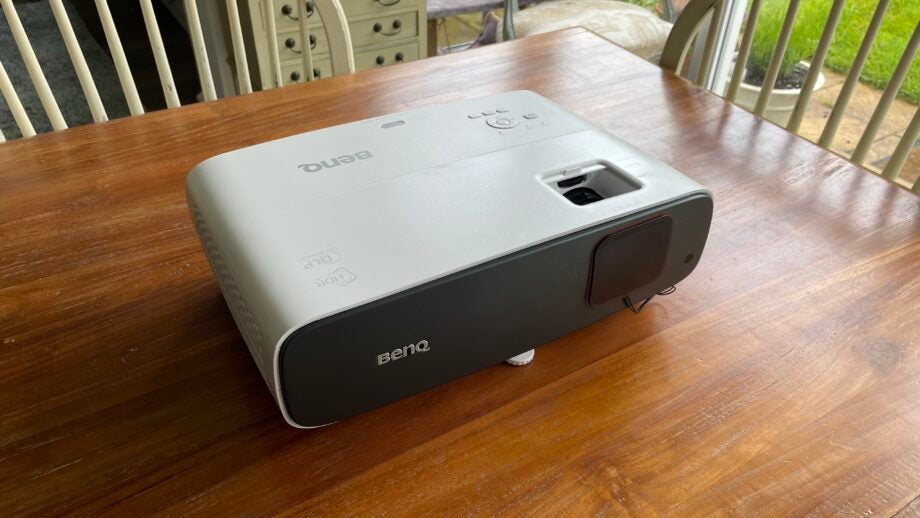
Verdict
While there are a couple of significant flaws to work round, the TK860I’s impressive brightness, sharpness, sound and aggressive approach to HDR make it a good option for hard-to-black-out rooms
Pros
- Exceptionally bright, sharp HDR pictures
- Flexible set up
- Enjoyable SDR performance
Cons
- HDR ‘glow’ issues using brightest preset
- Smart system can be bettered
- Black levels compromised with HDR
Key Features
- Google TV Smart SystemShips with a dongle that can be fitted into the projector’s bodywork
- Built-in Trevolo sound systemBuilt-in 2 x 5W audio system
- Local Contrast EnhancerDivides the picture up into more than a thousand analysis zones to deliver a more refined, balanced picture
- HDRSupports’ HDR10 and HLG formats
Introduction
The BenQ TK860i comes hot on the heels of the W2710i. While the TK860i certainly shares some DNA with that model, it’s ultimately quite a different beast, aimed at a very different user base.
While the W2710i sits in BenQ’s CinePrime series, aimed at movie fans ready, willing, and able to properly darken a room for a serious movie nights; the TK860i belongs to BenQ’s Home Entertainment series for more casual users looking for a projector to use in relatively typical (as in, not blacked out) room conditions with a wider range of potential content sources.
The W2710i fitted its brief to tee, so hopefully the TK860i can do the same.
The BenQ TK860i costs £1,699 – exactly the same as the W2710i. This underlines how BenQ sees the TK860i not as a cheaper alternative to the W2710i, but a model that’s hopefully as capable of doing as effective a job for a different target market.
The £1,699 price looks reasonable value in today’s marketplace for a home-focused projector that claims 4K resolution and high dynamic range capabilities.
You can get a version of the TK860i, the TK860 (minus the ‘i’), that doesn’t ship with a smart Android TV dongle. This costs £100 less, and should be popular with people who already have an external smart streaming device such as a Fire TV stick or Apple TV box.
The TK860i will be available to order in the US from the end of May, for $1,799.
Design
- Hidden smart adaptor bay
- Crisp white and grey finish
- Coffee-table friendly size and sculpting
At first glance it’s hard to distinguish the BenQ TK860i from the W2710i – or any number of other previous BenQ home projectors. It has the same compact rectangular shape, the same softening rounded edges and corners, the same white finish for its top and left/right sides, and the same contrasting dark front edge containing a lens at its right-hand side.
While it might not be an original design, it’s a perfectly pleasant one that causes minimal disruption to your coffee table.
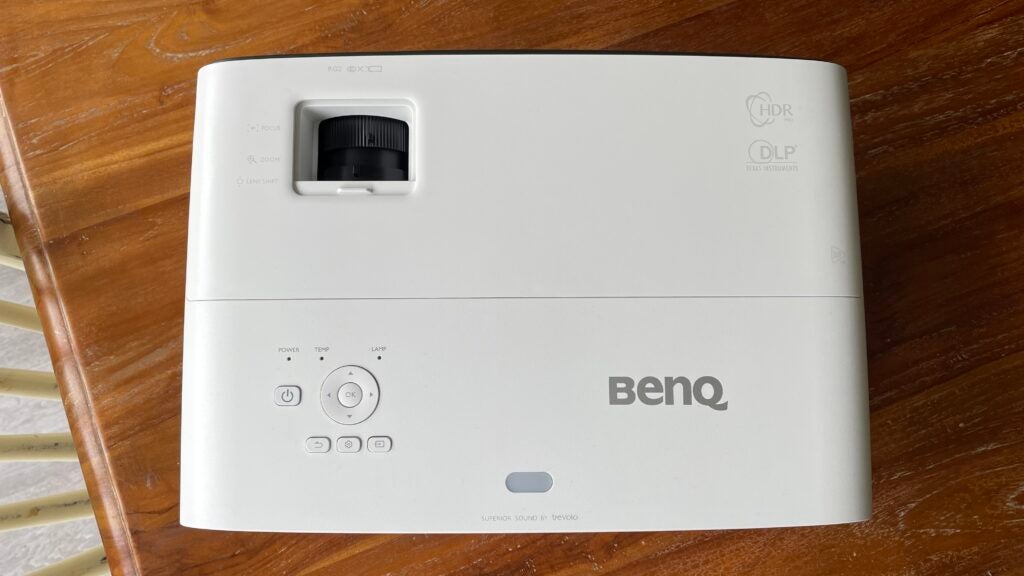
It’s a very practical design, too, with its control buttons on its top edge and straightforward zoom, focus and optical image shift wheel adjustments tucked under a slide back cover above the lens barrel. Its three screw-down feet also make it relatively easy to both get the TK860i’s image in the right place on your screen, and correct for unevenness in the surface the projector’s sitting on.
BenQ has helpfully provided a bay under a removable cover on the TK860i’s top edge into which you can fit the provided smart dongle.
The only really obvious ways of distinguishing the TK860i from the W2710i are that the TK860i features a white rear panel while the W2710i features a dark grey one, and that the TK860i sports an orange border around its lens.
The TK860i ships with two remote controls: one for the projector, and a separate smaller one for the smart dongle. The main projector remote does actually let you access all the apps and services without needing the smart one, though, and is even equipped with a mic for Google Assistant voice control.
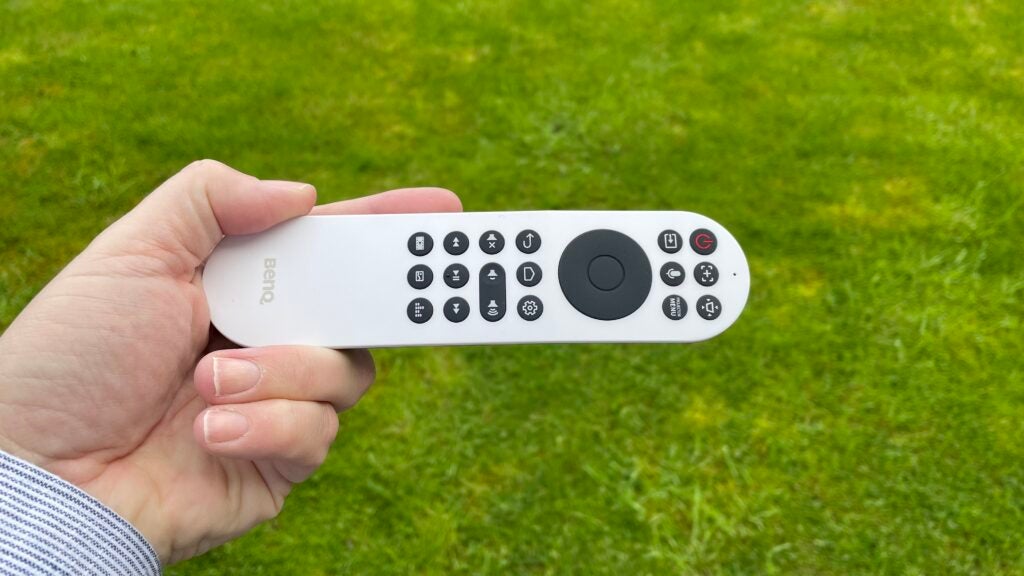
Features
- Single-chip DLP optical system
- 3300 Lumens claimed peak light output
- Android TV dongle included
The BenQ TK860i ticks all the boxes you’d hope to see with a projector aimed at a relatively casual user base. Its 3,300 lumens of claimed peak brightness should be much more effective at punching through ambient light than the W2710i’s 2,200 lumens. It may also help the TK860i get more value out of its claimed support for high dynamic range playback.
I should add that really no projector can deliver a ‘true’ HDR experience in the way that high-end TVs (for which HDR was developed) can; projectors just aren’t built that way. The more brightness a projector has, the more of a chance it has of delivering at least a decent step up from SDR. Provided that brightness doesn’t get in the way of other more traditional picture elements.
The TK860i is very easy to set up – handy for a projector of this sort, which may well find itself being brought out of a cupboard every time a household wants to use it. Three screw down legs help you get the image level and in the right place on your wall or screen, and a decent range of optical vertical image shifting is on hand to help lift or lower the image without leaving you with angled edges. An automatic keystone correction system is provided to sort out image geometry if the other set up tools haven’t done the job already.
The zoom and focus rings above the lens feel responsive without being calibrated so tightly that you can’t make very fine adjustments to them, and the onscreen menus are pretty straightforward for the most part. Especially if you can manage with their simplified out of the box presentation, rather than switching them into their Advanced mode.
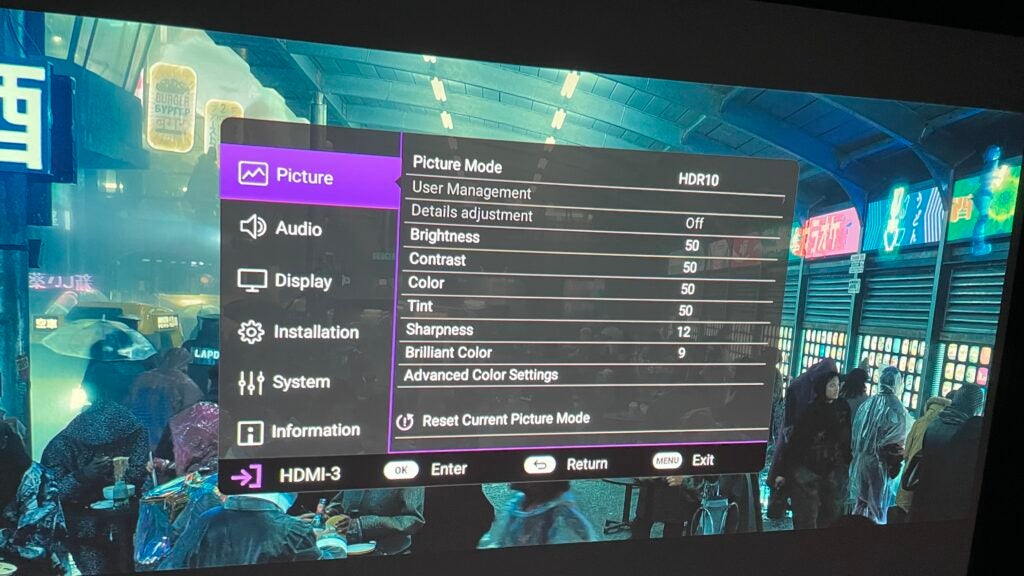
Rounding out the TK860i’s casual appeal is a built in 2 x 5W sound system designed with BenQ’s TreVolo audio division that will – if it’s any good – save you the trouble of having to find an external audio solution.
The TK860i’s connections are mostly impressive for its money. In particular it carries three HDMI inputs rather than the two you get on the vast majority of rivals. You don’t need to use any of these for the included Google TV dongle, either, which, as I’ve explained already, has its own separate connection.
The HDMIs only support 120Hz refresh rates with full HD resolution feeds; there’s no playback of the 4K/120Hz images available from the latest consoles and premium PC graphics cards. Nor is there any support for variable refresh rate gaming, and HDR format support is limited to HDR10 and HLG; the TK860i doesn’t share the W2710i’s support for the active HDR10+ system, which adds extra scene-by-scene picture information to the data stream. It does join the W2710i in not supporting the Dolby Vision HDR format.
Relatively few projectors support 4K/120Hz feeds (even gaming projectors), and even fewer support HDR10+ (or Dolby Vision). So having three HDMI ports alongside the smart dongle bay, a 12V trigger port, an RS232 control port and a USB media player port stands as an above par effort.
The TK860i’s advanced onscreen menus contain an impressive array of picture set up features. These include a fulsome colour calibration system, and a return of BenQ’s HDR-Pro system, complete with its Local Contrast Enhancer engine. This breaks the image into more than a thousand separate zones, and then tweaks the image’s appearance in each zone to try and get the optimum image performance – while also remembering to keep things balanced between the different analysis zones.
There’s a dedicated Game preset that delivers input lag below 18ms with 4K/60Hz sources, and a Cinema preset designed to deliver the projector’s most ‘accurate’ pictures with film sources. There is no Filmmaker mode as found on the more movie-focused W2710i, and the TK860i’s more casual approach also sees it ditch the W2710i’s support for ISF professional calibration (though for DIY calibrators there’s still both two point and 11-point white balance adjustment, plus a full 3D Colour Management System).
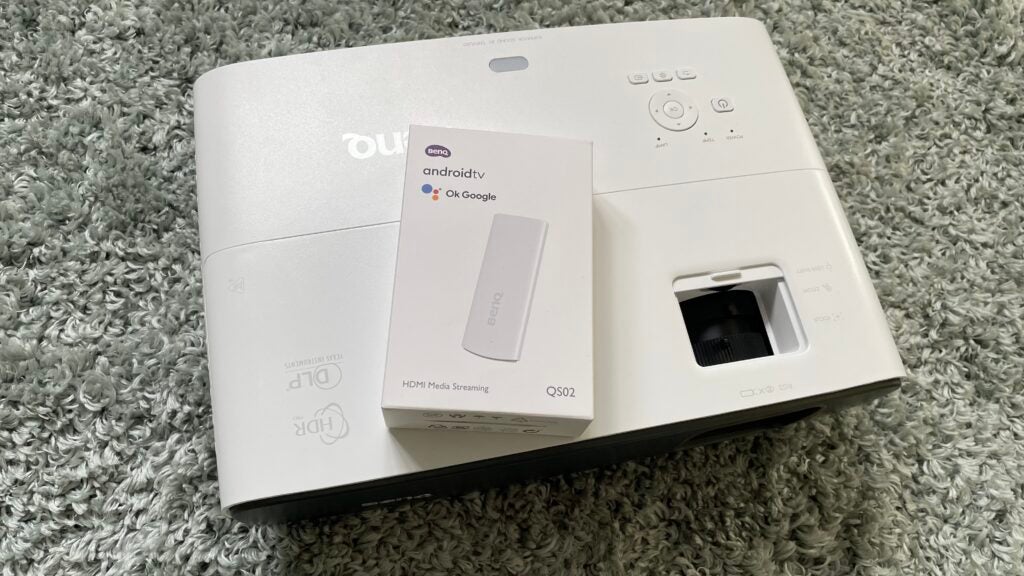
The TK860i also lacks BenQ’s CinematicColour system, which uses Waveform analysis, special colour wheels and factory calibration to deliver accurate colours out of the box. BenQ claims the TK860i can cover 98% of the Rec709 standard dynamic range colour palette (versus 100% on the W2710i), but it doesn’t join the W2710i in claiming 95% of the DCI-P3 digital cinema colour range.
It does retain a dynamic iris to adjust the amount of light emitted at any given moment in a bid to improve black level response, as well as a solid frame interpolation system that can come in handy when watching sports broadcasts and streams. Also retained from the W2710i, despite the TK860i not being such a dedicated movie machine, is a True Cinema 24p mode for more natural-looking playback of 24Hz sources.
The TK860i’s smart dongle, finally, builds into the projector a decent version of Android TV. This supports voice control/search, and provides a wide selection of streaming service apps – the vast majority of which are native, meaning they can detect its capabilities and adapt their streaming quality accordingly. Some other projectors, by comparison, only access basic online versions of streaming services, which end up delivering poorer, unoptimized picture quality as a result.
There are one or two holes in the smart TV system; the ITVX app throws up a message saying it can’t work on this device. There’s an argument, certainly, for opting to save £100 by getting the TK860 without the ‘i’ dongle and adding a Fire TV or Google Chromecast stick instead. Though don’t forget that a third party streaming device won’t conveniently fit inside the bay built under the projector’s top edge like BenQ’s dedicated dongle does.
Performance
- Exceptional sharpness and detail
- Bright enough for use in regular living rooms
- A couple of HDR issues
The BenQ TK860i really is a different picture beast to the W2710i. Its extra brightness pretty much hits you in the face. I started off my tests in a dark room setting, in which the TK860i’s pictures, especially with high dynamic range sources, seriously exploded off my screen – even though that screen only deploys a neutral gain. This makes pictures look more intense, punchy and, I guess, HDR (though I must stress again that no projector can do full justice to HDR).
The impressive brightness helps colours look more vibrant and voluminous, especially while using the TK860i as a gaming display. The extra brightness also helps the TK860i’s pictures punch through (within reason) ambient light, confirming that as billed, it’s a much more effective casual use/living room option than the dark room focused W2710i.
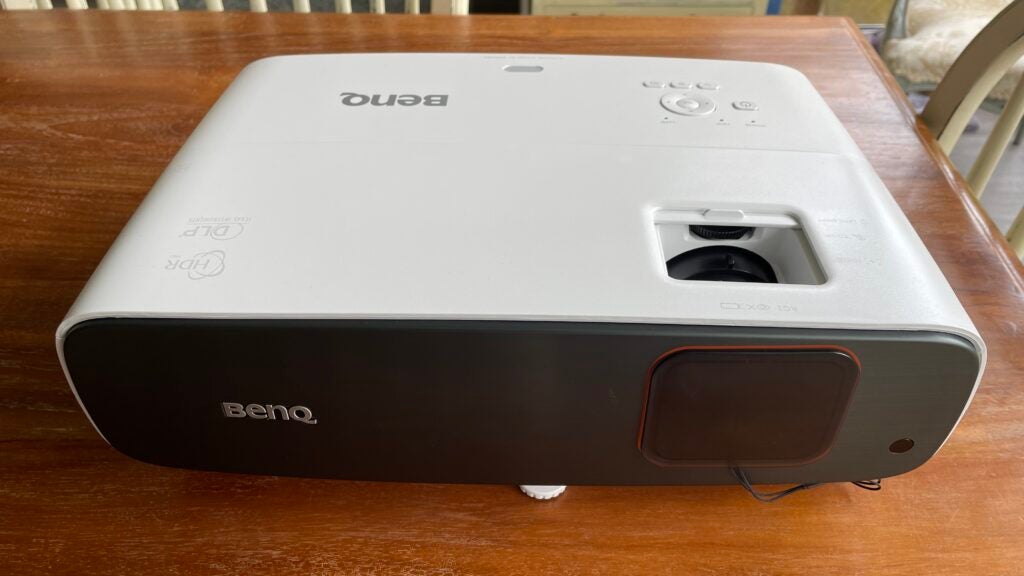
A positive attribute the TK860i’s pictures share with the W2710i is their extreme sharpness. Native 4K sources really do look 4K in my humble opinion, rather than like some sort of mere souped up HD. Along with the W2710i, the TK860i delivers the most detailed, crispest-looking pictures I’ve seen on any projector for anywhere near the £1,699 price point.
And this detail remains pleasingly intact when there’s motion in the frame, regardless of whether you’re using the frame interpolation system with 50Hz frame interpolation, a 1080p 120Hz gaming stream, or a 24fps movie source.
Colour reproduction isn’t as subtle or refined as it is with the W2710i, and nor are tones generally quite as natural looking using the out of the box presets (especially with HDR sources). There is an exception, though, when it comes to skin tones, which look really impressive with minimal manual interference, while the TK860i provides enough calibration options to let you substantially improve out of the box colour flaws too.
While the TK860i can fairly be considered a very good SDR projector for film, streaming and gaming purposes, its brightness can cause a few HDR hiccups once you look past the initially eye-catching positives.
Black levels appear infused with noticeably more greyness with HDR sources than they do on the W2710i. This dampens the sense of contrast in the picture, too, despite the big brightness rise, and makes dark scenes look generally less convincing.
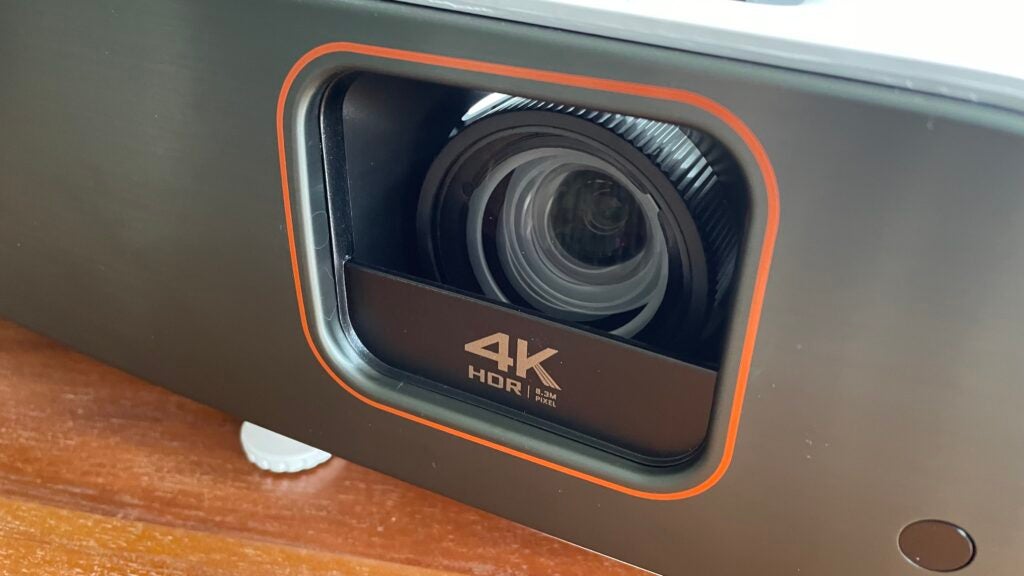
The greyness apparent in dark areas can hide a little more shadow detailing in dark areas than the W2710i does, too. Though it’s worth stressing that the TK860i’s rather grey black levels are less noticeable in the relatively bright living room settings the projector is designed to sit in than they are in the sort of dark rooms the W2710i is intended for.
My biggest issue with the TK860i’s default HDR settings, though, is that they cause pretty extreme clipping in the brightest areas of aggressive HDR masters. In the famously bright 4K Blu-ray transfer of Pan, for instance, during the sequence where Peter first arrives on the flying ship to Neverland, the orange clouds stand out like radioactive material from their surroundings, while the white-ish reflections on the floating water bubbles they sail by are so lacking in subtle shading they look like white holes ripped out of the image.
The only adjustment I could find that basically fixed this issue – while also sorting out an issue with exaggerated colour noise – was to reduce the TK860i’s BrilliantColour setting from its default 10 level to as low as level three or even two. Doing this, though, makes the picture look significantly less bright and punchy. So much so that it does somewhat undermine the TK860i’s credentials as a casual bright room option.
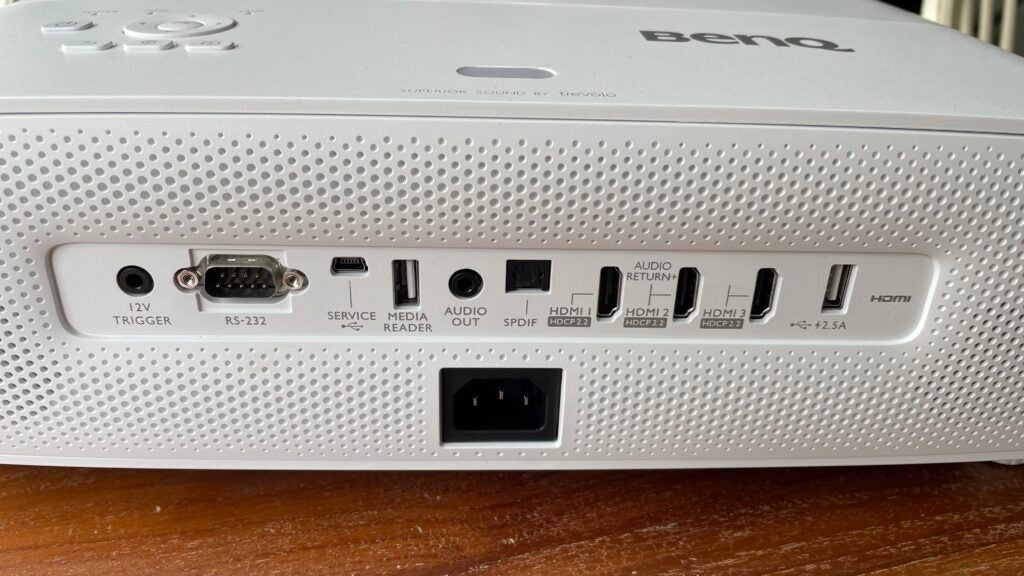
Reducing Brilliant Colour so much to solve the glowing/detail-losing peak HDR problem also reduces the TK860i’s contrast, since brightness is lost without delivering a noticeable improvement in the projector’s black levels.
The TK860i’s extra brightness makes the rainbow effect (where stripes of pure red, green and blue can flit in your peripheral vision or over stand-out bright picture highlights) slightly more distracting than it is with the W2710i, too.
One other issue with the TK860i’s out of the box pictures is one I also spotted with the W2710i. A tendency for the dynamic iris’s default High setting to be hyperactive, causing both aggressive shifts in brightness during cuts between dark and bright shots and, worse, causing the image’s brightness level to fluctuate and flicker within a shot.
Both these problems can be very distracting. Fortunately you can greatly reduce their impact simply by turning the Dynamic Iris down to its Middle setting – but as with the Brilliant Colour reduction required to reduce colour glow and clipping, dropping the Dynamic Iris to Middle does cost the image a little more of the brightness that’s at the heart of its living room appeal.
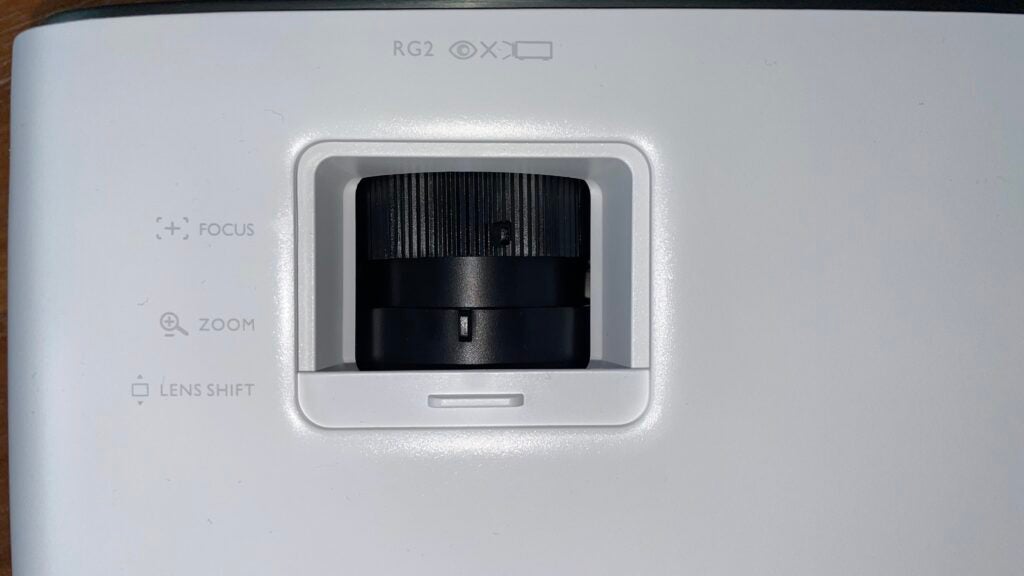
While it’s a shame you have to tweak its settings and compromise on some of the TK860i’s brightness to enjoy a consistent and therefore involving HDR experience, though, the results of your tweaks are still enjoyable to watch in even a quite bright living room setting.
Sound Quality
- 2 x 5W of power
- Well projected sound
- Nicely rounded tone without distortions
The TK860i’s sound, delivered by a 2 x 5W speaker system created with BenQ’s Trevolo audio division, seems pretty much identical to that of the W2710i. Which is good news, actually, as it means a repeat of the W2710i’s well-rounded, richly detailed, distortion- and harshness-free sound.
The sound is pushed a decent distance clear of the projector’s bodywork, too, so that if you’re sat behind the projector the sound seems at least vaguely connected with the onscreen action – a rare luxury with built-in projector sound systems.
There isn’t much bass to underpin the action, but the TK860i still sounds a lot more satisfying than most projectors.
Latest deals
Should you buy it?
Bright, sharp pictures: The TK860i’s pictures are bright enough to hold up against ambient light, at least when shown on a moderate gain screen.
Some tweaks required, that reduce brightness: The TK860i’s out of the box brightness slightly exaggerates the rainbow effect, reduces contrast and causes some clipping in areas of bright colour and peak whites in aggressive HDR sources.
Final Thoughts
The TK860i lives up to its billing of being a quite different proposition to its same-price W2710i sibling. Its extra brightness and more aggressive picture settings make it a much more satisfying watch in most ways in a light room environment than the more ‘dark room’ focused W2710i, and its extreme sharpness and vibrant colours give it an edge over many of its similarly priced living room peers.
Its over-enthusiastic approach to HDR colour and rather hyperactive High Dynamic Iris setting mean you unfortunately have to tweak some of the TK860i’s brightness away to get a satisfying, immersive and balanced picture.
This means the W2710i does a better job overall of hitting its brief than the TK860i, and earns a higher final score accordingly. Provided you’re aware of its strengths and limitations and are confident it ticks the boxes you’re looking for from a projector, the BenQ TK860i is still a very respectable and, once its pictures have been sorted out, easy to use living room home entertainment projector.
How we test
We test every projector we review thoroughly over an extended period of time. We use industry standard tests to compare features properly. We’ll always tell you what we find. We never, ever, accept money to review a product.
Find out more about how we test in our ethics policy.
Tested for several weeks
Tested with real world use
FAQs
DLP projectors work by shining light from a lamp or laser onto an array of individually controlled tiny mirrors placed on the back of a controller chip.
This is a smart TV system designed by Google that provides an interface for video streaming and gaming apps.
4K/60Hz, 1080p/120Hz, 17.9ms of input lag with 4K 60Hz
Full specs
Sustainability
Trusted Reviews’ holds the fact that global warming is not a myth as a core value and will continuously endeavour to help protect our planet from harm in its business practices.
As part of this mission, whenever we review a product we send the company a series of questions to help us gauge and make transparent the impact the device has on the environment.
We currently haven’t received answers to the questions on this product, but will update this page the moment we do. You can see a detailed breakdown of the questions we ask and why in our sustainability info page.







